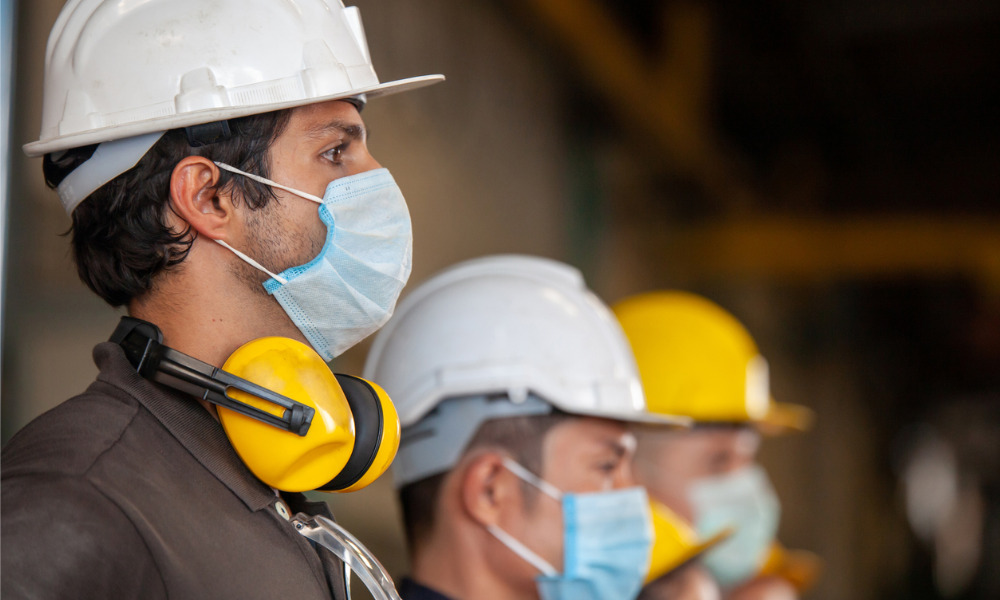
COVID-19 has taken health and safety off the table as an industrial issue

It was the 1980s rock singer Pat Benatar who once sang “Stop Using Sex as a Weapon”. In the building industry, it’s health and safety, not sex, that’s often the weapon of choice. No one denies building sites are inherently dangerous and taking health and safety seriously is important. But all too often health and safety have been used by unions as a de facto industrial weapon to disrupt work and delay projects.
This union approach to this vexed issue has been particularly prevalent on large CBD building sites for decades. But in the past several months the mindset of all parties to this issue has radically changed – and COVID-19 is the sole reason.
Suddenly, in a COVID-19 world, it seems it’s in the mutual interests of all stakeholders to deal with this issue co-operatively because construction companies want to keep sites open, workers want to keep working and unions want their members in work.
Nowhere has this been more evident than those instances where a building worker has tested positive to COVID-19. So far as we are aware, each occurrence has seen builders, workers and unions unite to work constructively together to handle the issue in a way that ensures the safety of the workforce while allowing work to progress with minimal disruption. Clearly, it’s working. Sites are remaining open, projects are being completed, workers are drawing a pay packet, and unions are playing a constructive role.
So, the question must be asked: is a cooperative approach more conducive to better health and safety outcomes than an adversarial one?
Just a few months ago, the unions’ answer to that would have been a resounding “no”. When it came to be dealing with risks far more likely than COVID‑19 to cause death, such as a fall from height, being struck from an item falling from height, or being hit by moving plant and equipment, pistols at 10 paces was the norm.
Not only were those risks cited as the reason for a union safety “intervention”, but all too often the focus quickly shifted to other, lower-order issues, and protracted disputation about whether they needed to be addressed any differently and, if so, how.
From the unions’ perspective, they argued their hard-line approach on health and safety had delivered, and there is merit in that argument. The average number of fatalities in the construction sector has been steadily declining in recent years. According to the data published by Safe Work Australia, the number of fatalities in the sector totalled 30 in 2017. In 2018 that figure was 24.
But 24 deaths in a year is 24 too many so there is room for improvement – and, in our considered view, all parties working together cooperatively is the solution. It’s worked to keep COVID-19 at bay on sites, so why not apply this remedy to all health and safety issues.
It doesn’t need to stop at health and safety. A less adversarial approach could flow on to other industrial issues plaguing building sites. For example, it could provide an opportunity for all stakeholders to consider more flexible work arrangements that don’t rely on construction workers working up to 60 hours a week.
Apart from being less tiring which, in itself, would be safer, it would allow for greater diversity in the workforce by providing greater opportunities for part-time or casual employment. It also could allow for a greater work-life balance, particularly for the new generation of construction workers with less weekend work being involved.
A union spokesperson was recently quoted as saying, “the (Victorian) Premier’s office, the Prime Minister’s office, Master Builders Victoria and the union working group are all working together to keep the industry safe and operational”.
Putting to one side the question of whether construction work should be allowed to continue in the midst of this pandemic, it’s to be hoped this augurs well for the future and might permit more projects to be built on time, on budget, and with less disputation, particularly in relation to health and safety matters – a potential silver lining in a very dark COVID-19 cloud for the construction industry.
Steven Amendola is a Partner and Dominic Fleeton a Special Counsel at workplace relations law firm Kingston Reid